Amethyst Quality Factors
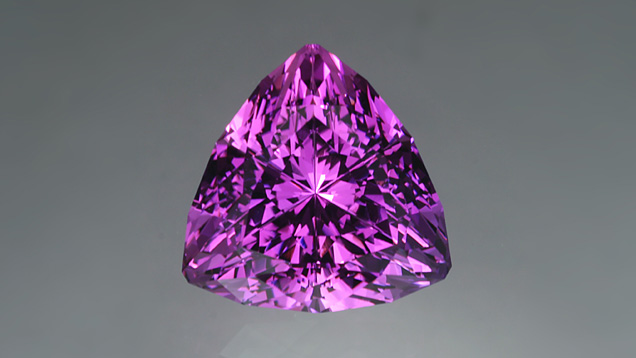
Color
The finest amethyst color is a strong reddish purple or purple with no visible color zoning. Dealers prefer strongly saturated reddish purple to dark purple, as long as the stone is not so dark that it reduces brightness. If the color is too dark, an amethyst might look black under dim lighting conditions.
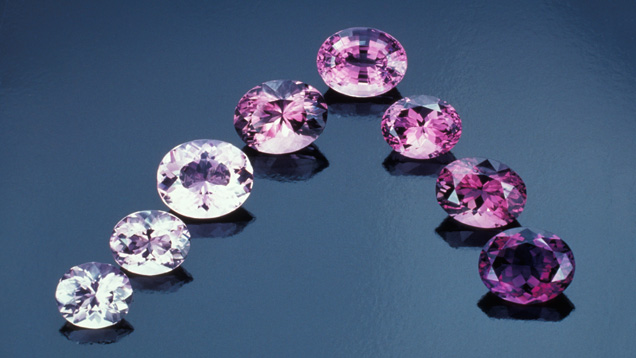
Amethyst’s color quality ranges from extremely pale to intense or very dark. - ©GIA and Tino Hammid
Any brownish or bronze-colored tints in an amethyst’s purple color, or any noticeable color zoning, lower its value dramatically. Buyers of loose amethysts view color zoning by placing the gems table-down against a white background.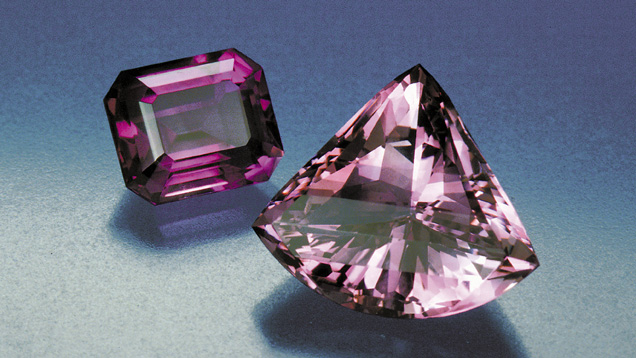
These two well-cut amethysts demonstrate the gem’s possible light-to-dark color range. - Courtesy Pala International
Many amethysts display a weak, light color or have strong zones of lighter and darker purple color. These factors lower the value of these stones.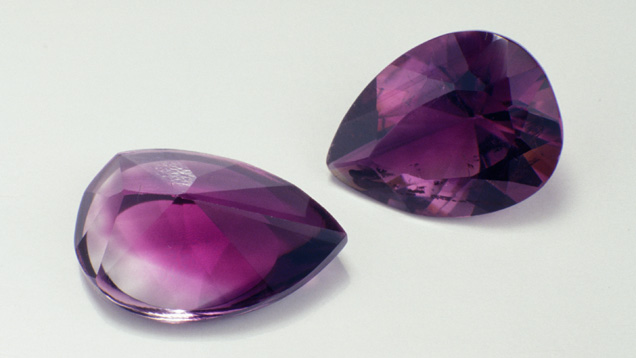
Color zoning is most visible when an amethyst is viewed face-down through its pavilion on a white background. It's not as visible face-up.
Heat treatment can lighten the color of very dark amethyst. Lower-quality light-colored amethyst and even light-colored quartz have been dyed to impart a purple color.Clarity
Much of the faceted amethyst in the market is eye-clean, meaning it lacks eye-visible inclusions. African material, especially from Zambia, can be a highly saturated raspberry color. It tends to have more inclusions than Brazilian material. However, due to its remarkable color, this is considered acceptable in a faceted stone. Eye-clean material of the same color is more valuable.
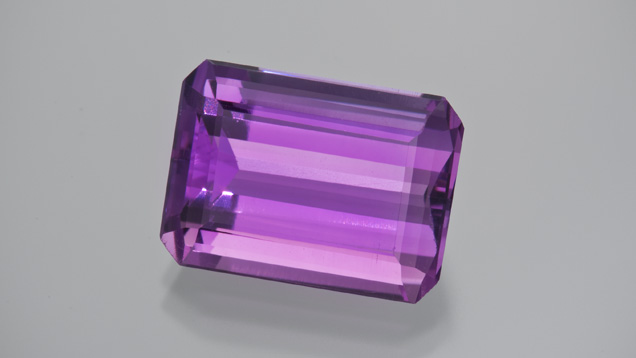
Most faceted amethyst on the market has no eye-visible inclusions. - Courtesy Ramiro Rivero & Metals del Oriente S.R.L
Amethysts with eye-visible inclusions but attractive color are usually cut as cabochons or fashioned into beads. Cabochons and beads that display fine color and high clarity sell at a substantial premium.Rarely, amethyst undergoes fracture-filling treatment of its surface-reaching fractures to improve apparent clarity.
Cut
Amethyst is cut into a variety of standard shapes and cutting styles. These include rounds, ovals, pears, emerald cuts, triangles, marquises, cushions, and others. Facet patterns include the classic triangular and kite-shaped facet arrangements called brilliant cuts, rows of concentric parallel facets called step cuts, and mixed cuts that combine both facet arrangements.
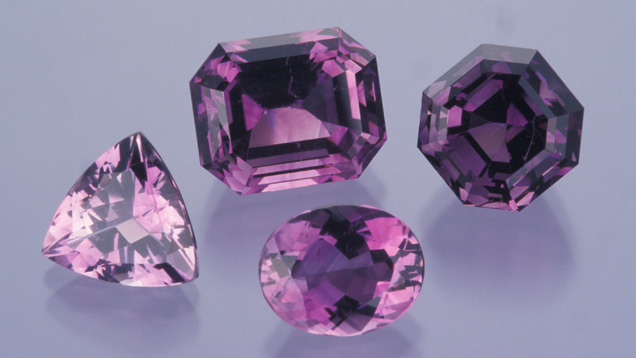
Amethyst is produced in a variety of popular cuts for jewelry. - Courtesy John Miatech
Amethyst is also a very popular gem for cutting into a variety of freeform shapes. This is done by hand or by automated cutting. These so-called fantasy or designer cuts can be mass produced or created as one-of-a-kind pieces. They sometimes display concave faceting, where normally flat facets have a concave shape. Other types of cuts and carvings are also found, including carvings of animals and other objects.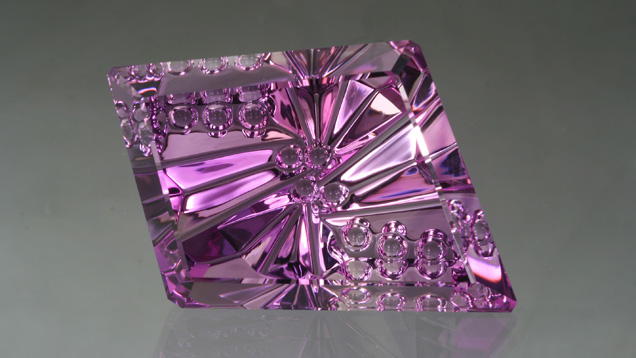
Amethyst is a popular gemstone for artistic designer cuts, even in large sizes like this 53.37-carat example. - Lydia Dyer, Amethyst Dreamscape gem courtesy of John Dyer & Co.
Carat WeightAmethyst is available in all size ranges for setting into a variety of jewelry styles. It’s popular as a large center stone since the price per carat does not rise dramatically with larger size. Amethyst is also commonly found in calibrated cuts, which means they’re cut precisely to standard industry sizes, in all qualities.
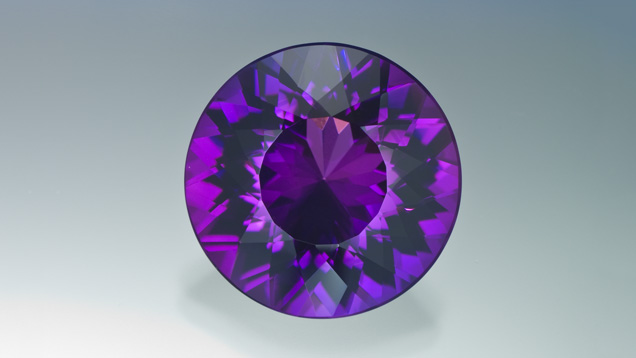
It’s not uncommon to see fashioned amethyst in large sizes like this 22.65-carat stone. - Courtesy Anil Gupta, Kris Gem International, Inc.



